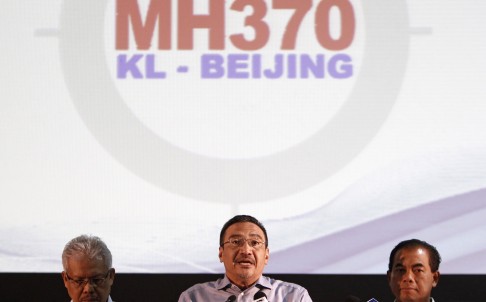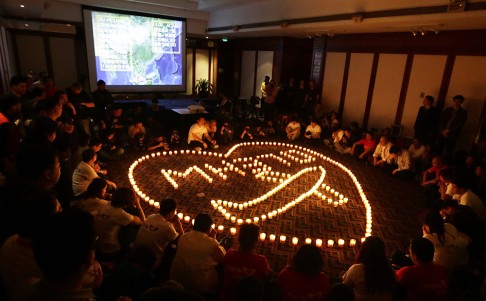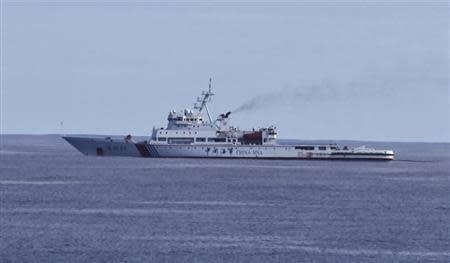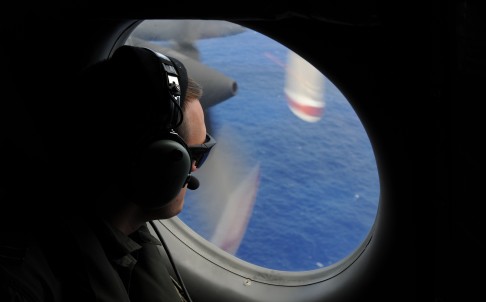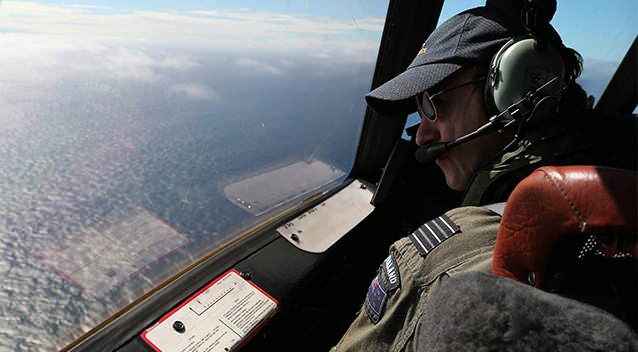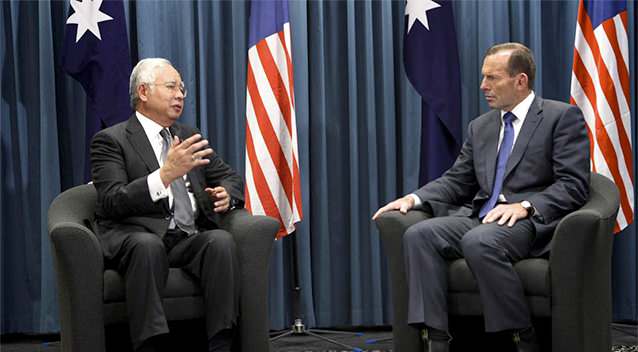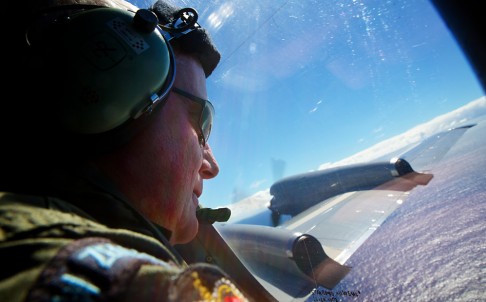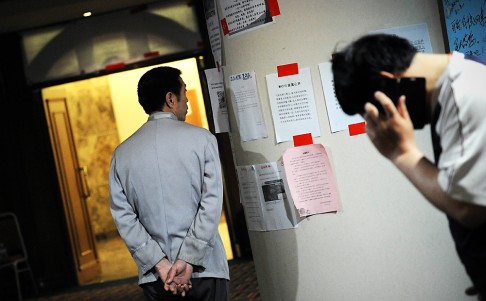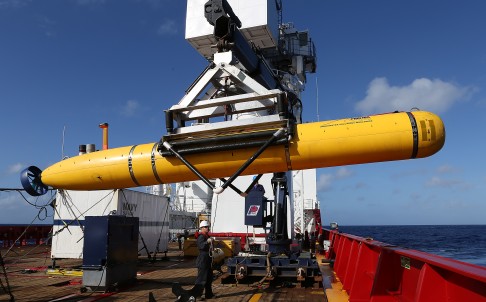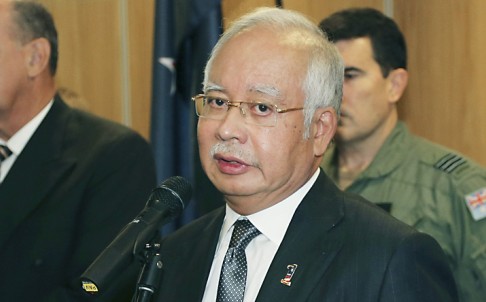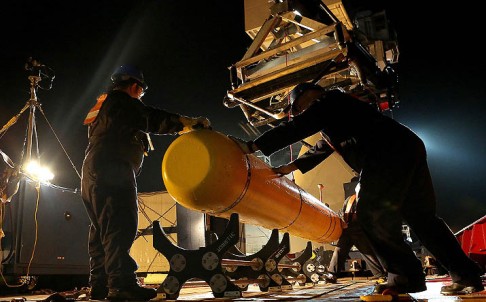- Joined
- Feb 25, 2014
- Messages
- 188
- Points
- 0
Australian officials say current underwater search for MH370 complete in 5-7 days
Underwater search using US Navy deep-sea autonomous underwater vehicle could end within a week, Australia says as Malaysia describes search as at a 'critical juncture'
PUBLISHED : Saturday, 19 April, 2014, 1:44pm
UPDATED : Saturday, 19 April, 2014, 4:55pm
Reuters in Sydney and Perth
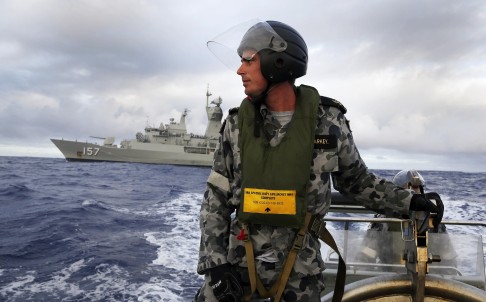
Leading Seaman, Boatswain's Mate, William Sharkey searches for possible debris in the southern Indian Ocean in the continuing search for the missing Malaysian Airlines flight MH370 in this picture released by the Australian Defence Force April 17, 2014. Photo: Reuters
Australian officials supervising the search for missing Malaysia Airlines Flight MH370 said on Saturday that an underwater search for the black box recorder based on "pings" possibly from the device could be completed in five to seven days.
Malaysia said the search was at a “very critical juncture” and asked for prayers for its success.
A US Navy deep-sea autonomous underwater vehicle (AUV) is scouring a remote stretch of the Indian Ocean floor for signs of the plane, which disappeared from radars on March 8 with 239 people on board and is believed to have crashed in the area.
After almost two months without a sign of wreckage, the current underwater search has been narrowed to a circular area with a radius of 10 kilometres around the location in which one of four pings believed to have come from the black box recorders was detected on April 8, officials said.
"Provided the weather is favourable for launch and recovery of the AUV and we have a good run with the serviceability of the AUV, we should complete the search of the focused underwater area in five to seven days," the Joint Agency Co-ordination Centre told reporters in an e-mail.
Officials did not indicate whether they were confident that this search area would yield any new information about the flight, nor did they state what steps they would take in the event that the underwater search were to prove fruitless.
The comment came in response to a request for clarification from the agency, after it said in a statement on Thursday that previous media reports suggesting the underwater search could take as long as several months were inaccurate.
Search planes and ships from a half dozen countries have tried in vain to catch any glimpse of the wreckage after nearly two months of daily sorties, making this the most expensive such operation in aviation history.
After almost two weeks without a signal, and long past the black box battery’s 30-day life expectancy, authorities are increasingly reliant on the US$4 million US Bluefin-21 drone, which on Saturday was expected to dive to unprecedented depths.
Because visual searches of the ocean surface have yielded no concrete evidence, the drone and its ability to search deep beneath the ocean surface with "side scan" sonar has become the focal point of the search 2,000 kilometres west of the Australian city of Perth.
The search has thus far centred on a city-sized area where a series of "pings" led authorities to believe the plane’s black box may be located. The current refined search area is based on one such transmission.
After the drone’s searches were frustrated by an automatic safety mechanism which returns it to the surface when it exceeds a depth of 4.5 kilometres, authorities have adjusted the mechanism and have sent it as deep as 4,695 metres, a record.
But hopes that it might soon guide searchers to wreckage are dwindling with no sign of the plane after six deployments spanning 133 square kilometres. Footage from the drone’s sixth mission was still being analysed, the Joint Agency Co-ordination Centre said on Saturday.
“It is important to focus on today and tomorrow. Narrowing of the search area today and tomorrow is at a very critical juncture,” Malaysian Acting Transport Minister Hishammuddin Hussein told a media conference in Kuala Lumpur, asking for people to pray for success.
Malaysia was asking oil companies and others in the commercial sector to provide assets that might help in the search, Hishammuddin added, after earlier saying more AUVs might be used.
On Monday, the search co-ordinator, retired Air Chief Marshal Angus Houston, said the air and surface search for debris would likely end by midweek as the operation shifted its focus to the ocean floor.
But the air and surface searches have continued daily, and on Saturday the Joint Agency Co-ordination Centre said up to 11 military aircraft and 12 ships would help with the day’s search covering about 50,200 square kilometres across three areas.

